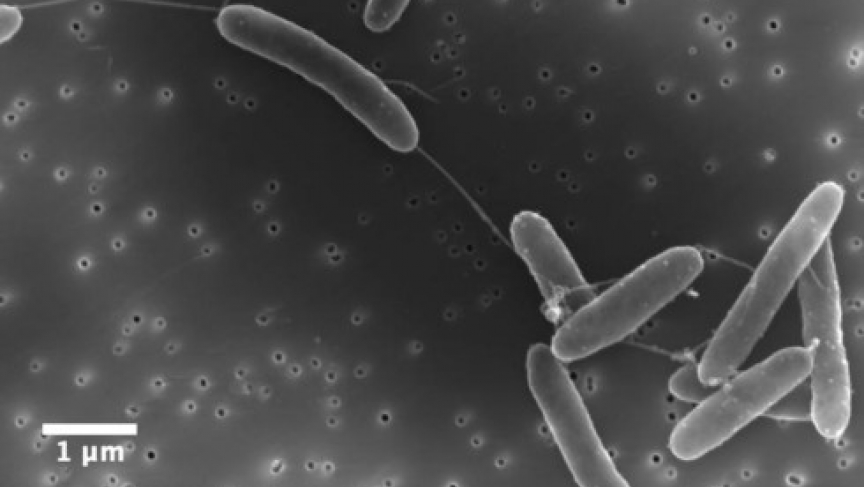
Images of bacterial nanowires
'Bacterial nanowires' may lead to breakthroughs in semiconductors, fuel cells and more
For about a decade, scientists have known about bacteria that "breathe" using rocks and minerals in place of oxygen. Now a new study reveals the surprising way they do it.
This story is based on a radio interview. Listen to the full interview.
http://www.pri.org/stories/2014-09-19/bacterial-nanowires-may-lead-breakthroughs-semiconductors-fuel-cells-and-more
The bacteria survive by "breathing" through a system of "bacterial nanowires" that connect to iron-based material nearby. "Nanowires are actually the membrane of the cell morphing itself into the form of a long wire or tube [that extends] away from the cell,” says Moh El-Naggar, an assistant professor ofphysics and biological sciences at the University of Southern California. “The membrane is [covered] with very specific proteins that can carry electrons — proteins called cytochromes,” El-Naggar explains.
At the cellular level, "breathing," or respiration, is different from how we normally imagine it. Cells draw electrons from food and transfer them to the material they're breathing, whether it's oxygen or rock. After receiving the electrons, oxygen passes easily back through the cell membrane, completing the cycle.
But in the absence of oxygen, a cell needs to find a way to transfer the electrons to something outside the cell membrane. This is what the nanowires do. El-Naggar and his colleagues discovered that, if deprived of oxygen, certain bacteria will grow nanowires that shoot out from the cell in an attempt to find something else that can keep them alive.
“[C]ells make this beautiful molecule called ATP, which is basically the energy currency of life,” El-Naggar says. “It’s what you need to get life going. [And] a lot of bacteria can make this without oxygen — including even with things that are solid, outside the cell body.”
This may sound weird, El-Naggar says, but there was “plenty of microscopic life here on Earth, probably for about one-and-a-half billion years or so before there was oxygen in the atmosphere ... There were, however, a lot of rocks."
Since their discovery, bacterial nanowires have been the subject of much scientific debate, El-Naggar says: What exactly are these wires made of? How can electrons travel long distances in a biological system? To help answer these questions, El-Naggar and his colleagues developed a way to watch the process “live.”
“We have these beautiful movies of the bacteria shooting out these bacterial nanowires into their environment," he says. "What's even more exciting, perhaps, from a scientific standpoint, is by monitoring it live, you can label for different components, figure out what they're made of, and study them in great detail.”
From these movies emerged the surprising finding that the nanowires are not something the cell grows: they are instead the cell itself extending outward to transfer its electrons to an energy source in order to live.
El-Naggar believes nanowires will one day have practical applications. In 2009, he and his colleagues proved that, because nanowires transfer electrons so reliably, they are highly efficient electrical conductors.
On the nanoscale, this might mean they could be engineered to power things in remote, harsh environments. On a much larger scale, wastewater treatment has emerged as a significant application, he says.
“You can tap into these electrons, harvest them at the electrode, and then basically what you've built is a biological battery, a microbial battery — or a microbial fuel cell,” he explains. “In principle, it's not that different from [commercial] fuel cells. But the catalyst driving the burning of the fuel and the generation of the electricity just happens to be a living organism inside the fuel cell.”
This story is based on an interview from PRI's Science Friday with Ira Flatow.
No comments:
Post a Comment